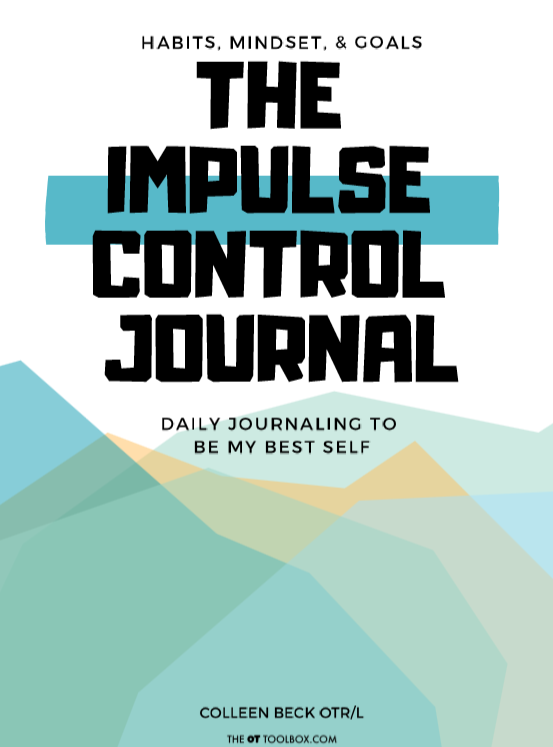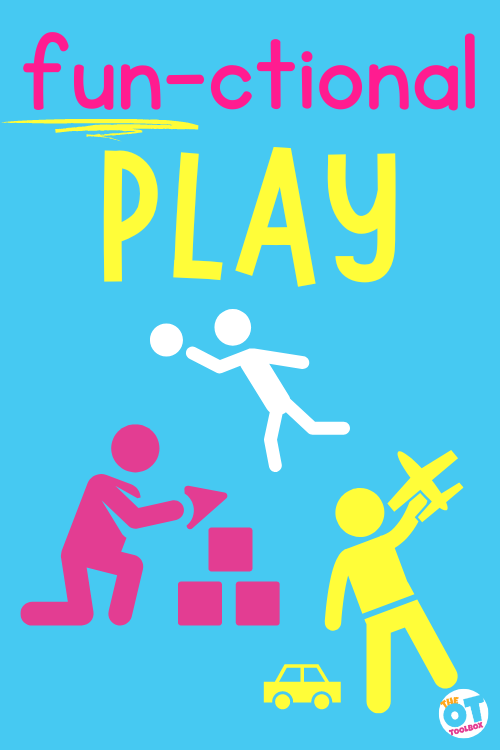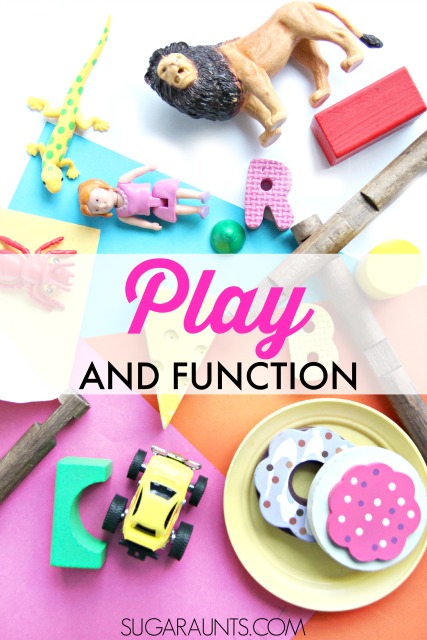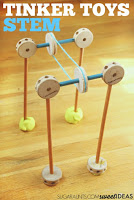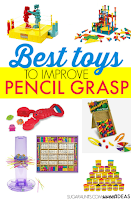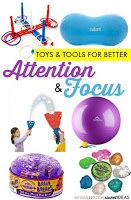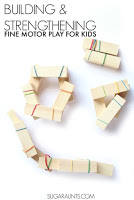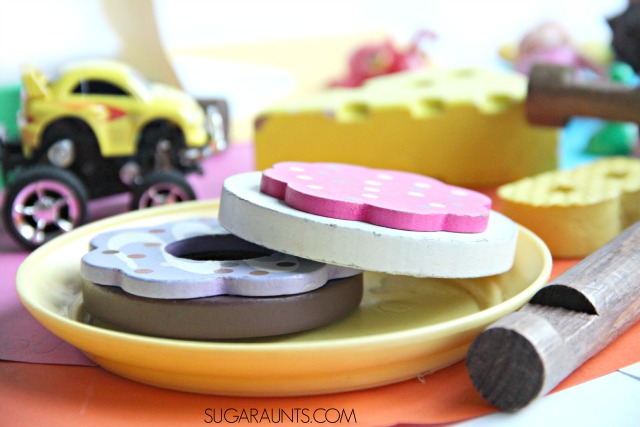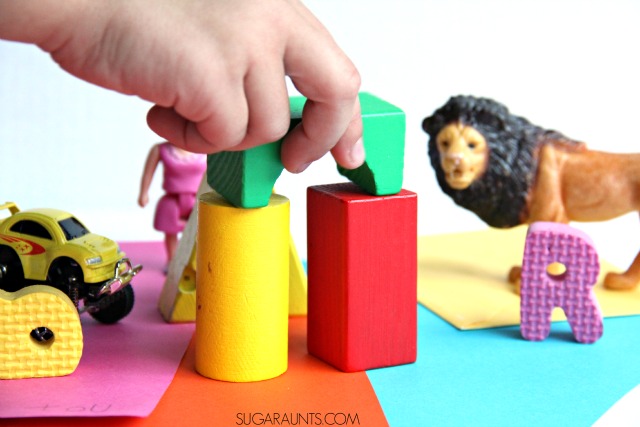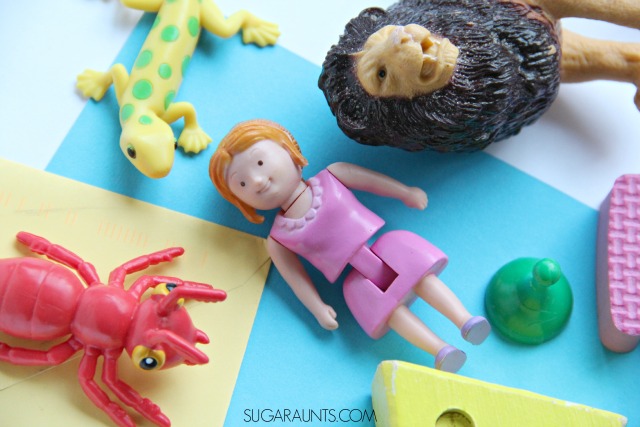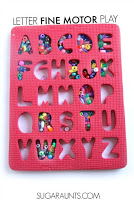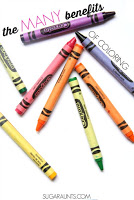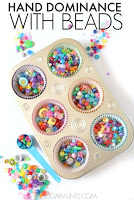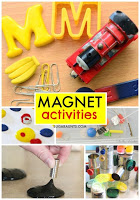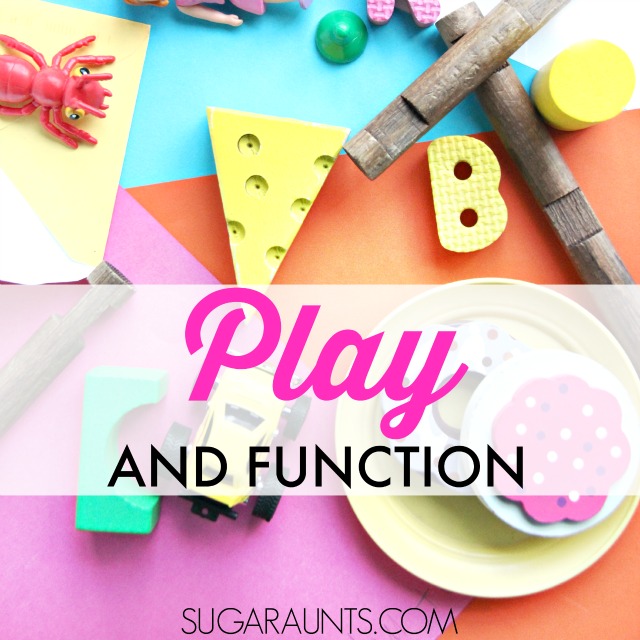In this blog post, we are addressing self-reflection activities as a tool to support self-understanding, self-awareness, and personal insight. In young children, this is a challenge that progresses as development occurs. But for some, the personal perspective becomes an area of frustration when empathy, executive functioning, and the ability to self-evaluate is a challenge. Challenges in the ability to self-reflect impact functional performance, social emotional skills, and learning. Let’s cover self-reflection activities and specific self-awareness exercises as a tool for development and personal growth.
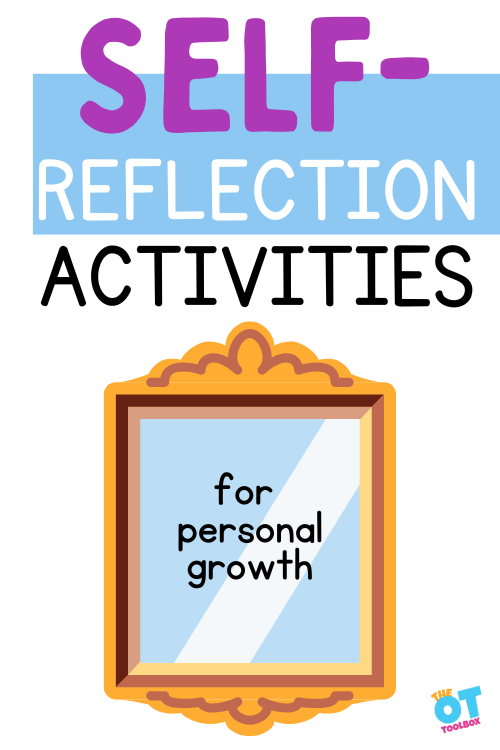
Self-Reflection Activities
Self reflection leads to growth. Without looking back at failures and successes, growth is inhibited. If you are one of the few who are actually perfect in every way, you can stop reading. For the rest of the world, read on. The start of a new year often brings bouts of goal setting and self reflection.
WHAT IS SELF AWARENESS?
Self-reflection is a tool that kids and adults can benefit from. Reflecting on one’s actions and behaviors is a great way to grow as an individual and to meet personal goals. Think about a time you’ve set a personal goal. Maybe you wanted to start exercising and lose a few pounds.
By self-reflecting on a day’s events, you can determine what worked in meeting your goal and what didn’t work. You can intentionally put a finger on the parts of your day that helped you meet your goal of going to the gym and what stood in the way of eating healthy meals.
Self-reflection is essential for goal-setting! Most of these occupational therapy activities are free or inexpensive ways to address self-reflection in kids.
Whether this is the start of a school year, or the turning of the calendar to a new year, self reflection activities and resolutions begin to surface. For some, self reflection comes naturally, searching for meaning, purpose, and ways to become a better person. Others find reflection difficult.
This post is full of self reflection activities to spark conversation, goal setting, and prompt growth.
It has been said that the first stage of recovery or change, is to recognize there is a problem.
Many people are unable or unwilling to change because they do not believe there is a problem. Becoming aware takes a lot of self reflection.
People need to recognize the skills they have, and those they are lacking. They need to keep an open mind about who they are and where they are going.
These self-reflection activities can be a vehicle for helping kids to address areas of functioning in several areas. Improving self-reflection can help kids with self-regulation, knowing what coping strategies to pull out of their toolbox, how to act with impulse control, how to better pay attention, how to improve executive functioning skills, and how to function more easily. It’s the ability to stop and think before acting or responding, based on internal knowledge and experiences.
Additionally, self-reflection pays a part in mindfulness. If we are practicing attentiveness in the moment and attending to internal and external experiences, we can self-reflect on what worked, what didn’t work, and how to make things work better next time.
Self-reflection can be so helpful in social-emotional skills, academic learning, functional task completion, organization, and well-being! An awareness of self and the impact one’s own actions has on others is part of the stages of empathy development, too.
According to Dean Graziosi, New York Times best selling author, “Self-awareness is the ability to understand your thoughts, emotions and core values, as well as realize how these elements impact your behavior. It requires emotional intelligence, and it’s about objectively evaluating yourself and aligning your actions with your internal standards. To be self-aware is to be able to realistically assess your strengths and weaknesses while maintaining a positive mindset. It’s the ability to judge where you are in life, determine where you would like to be and set goals to achieve your vision.”
To become self-aware, you must be able to:
- See yourself honestly, flaws and all
- Identify and control your emotions
- Realize your strengths and weaknesses
- Take strides toward growth – having a growth mindset helps
One tool for supporting awareness of emotions in general is by doing an emotions check in where the student (or any one, this can be done at any age), identifies how they feel and what their emotions are based on the situation, setting, and triggers. Another tool which is similar but different, is the feelings check in.
Self-Reflection Activities for Kids
One of the first steps in raising self-reflection to to help kids be more self-aware. They can use tools to improve mindfulness to notice how they feel, how the react, or how they behave. Most kids will struggle with this ability in the moment (It’s tough for adults, too!) but they can identify what worked and what didn’t work in a particular situation through conversation.
Using self-control strategies like the Zones of Regulation can be helpful in talking about feelings and self-awareness.
Explore along with the child. When a child is playing or exploring their environment, it can be helpful to play right along with them. Use play experiences to communicate through play.
Use play experiences to mirror actions. When a child is playing, play right along with them! Mimic their actions and words to be more aware as a caregiver of the details of a child’s interactions and to bring awareness for the child. Use this tactic only when the child is in a positive mood. Mirrored actions should not be completed when a child is behaving poorly or to bring attention to behaviors.
Reflect on the day as a family. Plan a family meeting and talk about the good, the bad, and the ugly of the day. It’s a good way to talk about ways to work on areas of need.
Create a Choice Collection. Come up with options that include coping strategies or tools to use in different environments. These could be part of a sensory diet or self-regulation strategies.
Work on impulse control. The impulse control journal can help.
Use a journal to self-reflect through words or drawings.
Act out situations and how the situation played out. Consider adding dolls or toys for characters in the situations.
Model appropriate behaviors and self-reflection through conversation.
The sensory-based strategies outlined in The Sensory Lifestyle Handbook can be a beneficial tool for addressing self-reflection in kids.
Finally, try some of these self awareness games to build skills through game-playing.
reflection about personal development
Children, teens, and adults of all ages develop in different ways. It’s said that we never stop learning, and this is true at every age and stage. Through learning experiences, there is either success or failure, with some level in the middle. This development occurs whether learning a new skill, trying something new, or trying a new way of doing something.
When there is learning, there is personal development.
As participants in an activity, we can utilize self-awareness skills to monitor successes or challenges that lead to goal achievement.
We can use that information to identify areas of need, or specific areas that we need to try again in a different way.
This allows us to create a feedback analysis of sorts that supports further growth in an area.
Some ways to reflect on personal development include tactics that are used for self-awareness and goal achievement. These strategies are types of reflection exercises and include:
- Self-talk
- Monitoring progress
- Goal mind maps
- Goal ladders
- Identifying next steps
- Talking with others for constructive feedback
- Addressing negative feedback
POSITIVE SELF REFLECTION ACTIVITIES
Self-reflection activities are not just focused on the negative perspective.
There is a certain stigma to self reflection activities that they are just focusing on the negative things that need to change. There is positive self reflection also. What did you do well that you need to encourage yourself to keep doing? What did you learn that will be a great asset to your skillset?
Positive self reflection takes as much practice as reflection for growth.
Theoretically is your glass half full or empty? Do your learners search for problems, look for drama, or doubt themselves? By answering these questions we can come up with tools to support habits that our learners might be challenged with. Self-awareness activities are strategies to support self-reflection.
Encourage positive self reflection by trying some of the following activities:
- Write three positive things about yourself each day
- Journal about positive experiences
- Practice acts of kindness
- Don’t compare yourself to others, solely reflect on your own abilities
- Start a gratitude journal along with various gratitude activities
- Ask yourself self reflection questions
- Positive self talk activities for kids
- I am….- learners write positive statements starting with “I am”
- Post positive affirmations around the room, class, social media, or wherever it helps to self reflect on positive thoughts and actions
- Teach learners to flip a negative into a positive – I am bad at math, could be turned into I am a great reader, or I can count to 1000
- Use a mirror for positive self talk – practice affirming while looking at yourself
- Create a positive self talk morning ritual – The Miracle Morning is a powerful resource
SELF REFLECTION ACTIVITIES FOR GROWTH
Everyone has room for growth. Some have the personality type that limits self-reflection and personal awareness, while others have a stream of consciousness that easily enables self-reflection. We are all unique individuals, and these different types of traits are totally ok!
I bet the number one athletes in the Olympics believe there is room for growth. Practice does not make perfect, it makes it better. When I am evaluating students, I often start by asking them why they think I am seeing them. Most of them have some idea, even if they have no idea what Occupational Therapy is. That is my jumping off point. I find out what they believe to be their weaknesses and strengths, and go from there. They may not be accurate, but it is their belief, so it can be shaped.
- The key to shaping beliefs and setting goals is to set measurable ones. The acronym SMART stands for specific, measurable, attainable, relevant, and timebound.
- Use metrics and data to gather correct information about skills and deficits
- Learners who have an unrealistic view of themselves, may need counseling to work through this. Body dysmorphia is one such example. People suffering from BD see flaws that no one else sees. They set unrealistic expectations and goals for themselves trying to reach an imaginary goal
- Teach The Power of Yet – I may not be the best chess player YET. I could be with more practice and instruction
- Ask useful questions – create writing prompts starting with key questions:
- What am I afraid of?
- I struggle when . . .
- One of the most important things I learned was . . .
- Being myself is hard because . . .
- I wish I were more . . .
- Letter to future self – what would your learners tell their future self?
- Create a realistic self view – while some learners feel they are all bad, others feel they are amazing. It seems counterintuitive, but the second group will need some help to realize everyone has growth potential. Gently shape these learners to also see their weaknesses as well as their strengths without squelching their self confidence
- Take a step back – electronics spoon feed information, making it readily available. The answers are just a click away. While this is great in some ways, it is not teaching self control, reflection, and the power of doing nothing
- Utilize the individual’s passions as a vehicle for addressing self-awareness. If they have a hobby or skill where they are successful, how did they learn the ability to complete aspects of that skill? How did they accomplish goals? How would they support another learner who is at the beginning of this skill learning? Sometimes when shifting the perspective to a teaching role, we can all use creativity in supporting self-reflection skills.
- Focus on emotional vocabulary as a tool to support students’ reflections of themselves, whether they are looking at personal achievements in a positive light or a negative light. This is an important skill to encourage, as we all have moments of doubt and moments of high confidence and assurance. Emotional learning is one tool in the toolbelt for supporting self-reflection in daily functional tasks.
A FINAL THOUGHT on self-reflection activities
Mindfulness is not new, but it has resurfaced as people have forgotten how to slow down. Monks have been using this technique for centuries. They can sit for an entire day doing and thinking nothing. They are able to clear their mind for hours. I have tried this and can make it about 30 seconds before my mind is racing. It even races while I sleep. Self reflection takes the same discipline and focus to make it meaningful.
As with anything new and different, change takes time and practice. The act of self reflection itself, can be your first goal!
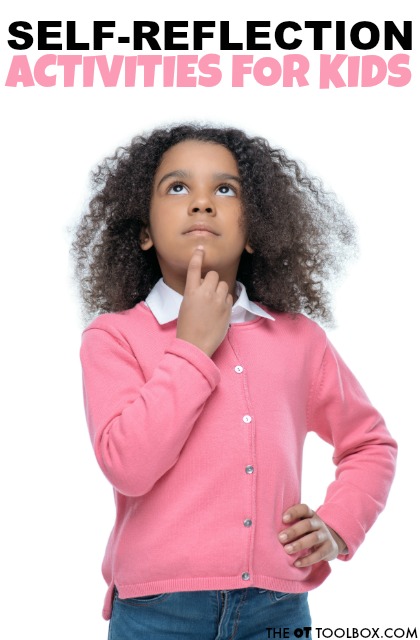
The Impulse Control Journal…a printable resource for helping kids strategize executive functioning skill development. When saying “calm down” just isn’t enough…
When a child is easily “triggered” and seems to melt down at any sign of loud noises or excitement…
When you need help or a starting point to teach kids self-regulation strategies…
When you are struggling to motivate or redirect a child without causing a meltdown…
When you’re struggling to help kids explore their emotions, develop self-regulation and coping skills, manage and reflect on their emotions, identify their emotions, and more as they grow…
Grab the Impulse Control Journal to build organizational strategies, planning, prioritization, habits, and mindset in kids.


